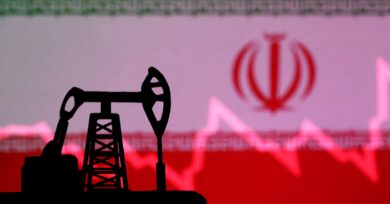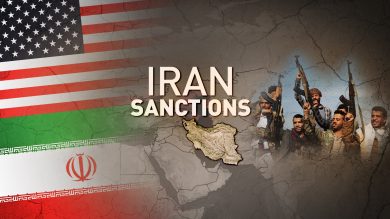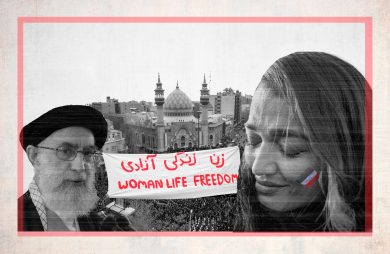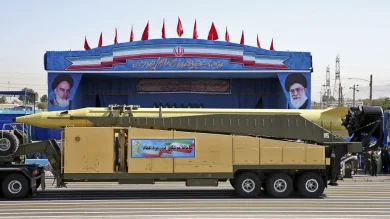The slogan “Women, Life, Freedom” (“Zan, Zendegi, Azadi” in Persian) has become the rallying cry for one of the most significant movements in Iran’s modern history. Sparked by the death of Mahsa Amini in September 2022—after being detained by Iran’s morality police for allegedly violating hijab laws—the protests have evolved into a nationwide demand for justice, equality, and freedom.
This powerful slogan encapsulates the essence of resistance in Iran:
• Women who stand at the forefront of the struggle, challenging decades of oppression.
• Life representing the right to live freely, without fear or repression.
• Freedom as the ultimate goal—a society free from tyranny and discrimination.
However, the Islamic Revolutionary Guard Corps (IRGC) plays a central role in suppressing this movement, using violence, censorship, and fear to maintain control. Despite this, Iranian women refuse to back down, leading a revolution that has captured global attention.
This opinion piece explores the meaning behind the slogan, the role of women in Iran’s revolution, the brutal response from the IRGC, and why the global community must support this fight for freedom.
1. The Origins of “Women, Life, Freedom”
While the slogan gained prominence after Mahsa Amini’s death, its roots lie in Kurdish women’s resistance movements. Originating from Kurdistan, the phrase has long symbolized the struggles of women against patriarchal and authoritarian systems.
In Iran, women have been at the forefront of political activism for decades. From revolutions to reform movements, they have continuously fought for:
• Basic civil rights
• Bodily autonomy
• Freedom of expression
• Equal access to education and employment
The 2022 protests, however, marked a turning point. For the first time, the demands of Iranian women were not framed merely as gender issues, but as fundamental human rights issues tied to the broader struggle for democracy and justice.
2. Women: The Heart of Iran’s Revolution
A. Defying Decades of Oppression
Since the 1979 Islamic Revolution, Iranian women have faced:
• Mandatory hijab laws
• Restricted access to employment and political participation
• Gender-based violence and legal discrimination
The “Women, Life, Freedom” movement is a direct rejection of these policies. By removing their hijabs, cutting their hair, and marching in the streets, women are reclaiming control over their bodies and futures.
B. Leading Protests and Civil Disobedience
From high school students to grandmothers, women across Iran are:
• Leading protests in major cities like Tehran, Mashhad, and Shiraz.
• Organizing strikes in universities and workplaces.
• Engaging in digital activism, despite internet blackouts imposed by the regime.
C. The Role of Young Women
Young women have become symbols of resistance, particularly after the deaths of teenagers like:
• Nika Shakarami (16) and Sarina Esmailzadeh (16), both killed during protests.
Their stories inspired international outrage, further galvanizing the movement.
3. The IRGC’s Brutal Response
The Islamic Revolutionary Guard Corps (IRGC) plays a central role in crushing dissent. As the regime’s most powerful security force, the IRGC:
• Arrests and tortures protesters, including women and minors.
• Uses live ammunition against peaceful demonstrators.
• Controls state media to spread propaganda, portraying protesters as “foreign agents.”
• Enforces digital censorship, limiting access to social media and communication platforms.
A. Targeting Women Protesters
The IRGC’s tactics against women are particularly brutal:
• Sexual violence in detention centers is used as a tool of intimidation.
• Forced confessions are broadcast on state TV.
• Families of female protesters are threatened and silenced.
B. Suppression of Minorities
The Kurdish and Baluch communities, where many protests originated, have faced even harsher crackdowns, with mass arrests and executions carried out by the IRGC.
4. Why “Life” and “Freedom” Matter in Iran’s Context
A. Life: A Demand for Dignity and Safety
For Iranians, especially women, “life” means the right to live without fear:
• Fear of arrest for dress code violations.
• Fear of being killed in the streets for protesting.
• Fear of disappearing into prison systems run by the IRGC.
The slogan “Life” signifies a demand for a life worth living—one free of oppression, violence, and fear.
B. Freedom: Beyond Political Rhetoric
Freedom in Iran’s context means:
• Freedom of expression without the threat of imprisonment.
• Freedom of choice in clothing, lifestyle, and beliefs.
• Freedom from the IRGC’s surveillance state, where every digital interaction is monitored.
It represents a break from decades of authoritarian rule, where the IRGC has dictated the boundaries of personal and political freedoms.
5. The Global Significance of Iran’s Movement
The “Women, Life, Freedom” movement transcends Iran’s borders. It is a global symbol of:
• Women’s rights in patriarchal societies.
• Democratic aspirations in authoritarian regimes.
• Human dignity and resilience in the face of brutal oppression.
A. International Solidarity
• Global protests have erupted in support of Iranian women—from London to New York.
• Celebrities, politicians, and activists have amplified Iranian voices, using #WomenLifeFreedom on social media.
• The European Parliament has called for sanctions against the IRGC in response to the regime’s violent crackdowns.
B. The Role of the Iranian Diaspora
The Iranian diaspora plays a critical role by:
• Documenting human rights abuses and sharing them with the world.
• Lobbying governments for stronger action against the IRGC.
• Providing resources for protesters inside Iran, including secure communication tools.
6. What the World Must Do Next
While international solidarity is important, concrete actions are essential:
A. Designate the IRGC as a Terrorist Organization
• The United States has already designated the IRGC as a Foreign Terrorist Organization (FTO).
• The European Union, UK, and Canada must follow, cutting off the IRGC’s financial networks that fund oppression.
B. Support Digital Freedom
• Provide VPNs, encrypted communication tools, and satellite internet to bypass censorship.
• Tech companies should block IRGC-linked accounts that spread propaganda and misinformation.
C. Sanction Human Rights Violators
• Impose targeted sanctions on IRGC leaders responsible for crimes against women and protesters.
• Freeze assets held by IRGC officials in foreign countries.
D. Amplify Iranian Voices
• Global media must continue to highlight stories of Iranian women.
• Governments and NGOs should support independent Persian-language media that provide unfiltered news.
7. Why This Movement Is Different
Unlike previous protests in Iran, the “Women, Life, Freedom” movement is:
• Led by women, who are not just fighting for gender rights but for national liberation.
• Decentralized, with no single leader—making it harder for the regime to suppress.
• Cross-generational, with youth, students, and families participating together.
• Driven by a clear vision for a future free from tyranny, discrimination, and fear.
This is not just a protest—it is a revolution of values, with women leading the charge for a new Iran.
Conclusion: Women Will Lead Iran to Freedom
The “Women, Life, Freedom” movement represents a paradigm shift in Iran’s history. Women, long oppressed by state-sponsored misogyny, have emerged as leaders of a national revolution that seeks not only gender equality but also democracy, human rights, and dignity for all Iranians.
The IRGC’s brutal response—marked by violence, censorship, and terror—proves that the regime fears the power of women more than any external threat. Yet, the unwavering determination of Iranian women shows that the days of oppression are numbered.
Join Our Newsletter!
Stay informed with the latest updates, news, and ways to take action in the fight for justice and global security. Sign up now to get updates delivered straight to your inbox!





